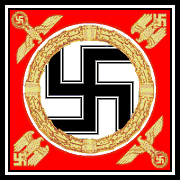GREATER GERMAN REICH
COMMAND FLAGS & PENNANTS OF THE HIGH COMMAND • 1933-45









